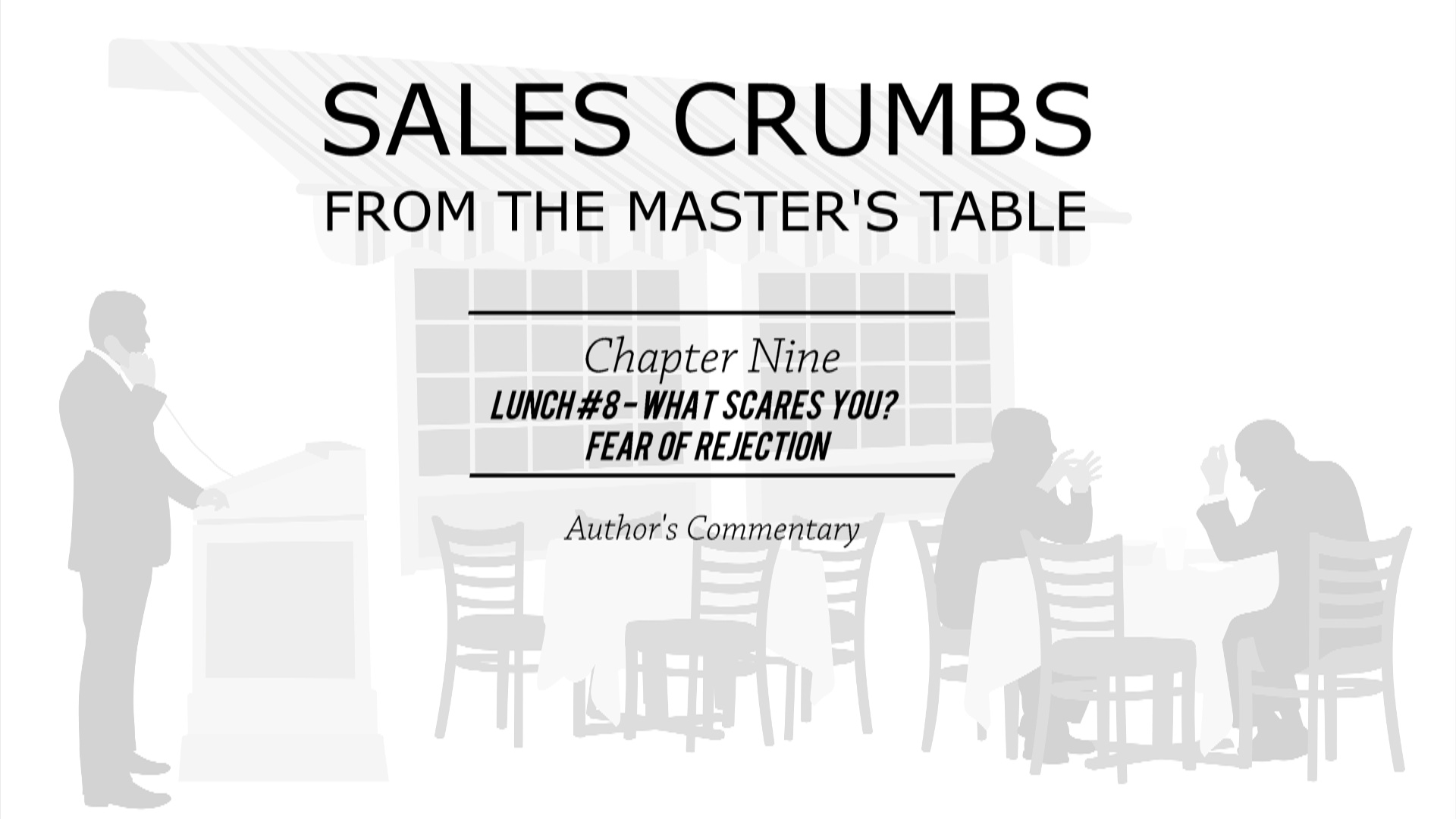Sales Crumbs from the Master's Table
Author Commentary with Brandon

Chapter 9 Commentary
Key Lessons
Fear of rejection is common in sales and in life.
Most people only have to face real rejection, intermittently, but sales professionals measure rejection in minutes. The phone calls to secure appointments, the "no's" they hear before they demonstrate their products, the "I changed my minds" even after a successful sale. Rejection is endless and a way of life. Sales requires a thick skin - to live in "oblivion" to rejection. That means you can't take it personally!
Rejection vs. Objection
Not to play artfully with words and syntax, but Rejection is to "refuse to consider." It shuts down a process before they even know if the offering is beneficial or not. That reaction of rejection is generally based on a reflex, timing, or the disposition of the prospect - It is not about you!
The front end of sales is about rejection; the back end is about objection.
Objection is different. It is a "viewpoint offered in opposition." In sales, we actually need the objection. As evidenced by SPIN Selling and other notable programs, most sales only occur after several objections. "I would never buy a black car" is not a rejection but an objection. It naturally leads to offering an alternative viewpoint: "How does titanium silver strike you?" or "what if I offered weekly washing and once a year detailing?"
In dealing with rejection, we need to consult The Law of Averages.
This is a scientific law generally applied to response rates and close rates for predicting marketing and sales effectiveness. Do you monitor your various "averages?" Such as how many appointments out of 100 contacts, how many demonstrations out of 20 appointments, and how many successful closes, etc. Many sales people don't measure this and overstate their effectiveness or they overstate their lack of effectiveness. They have a defeatist "I am struggling" pathology, even when they are actually right in the sweet spot of the Law of Averages.
Pay your dues in the Effort Phase
To leverage the Law of Averages, you must engage the Effort phase. Increase your "odds" by prospecting more people. Temporarily, this will set you up for more rejection, not by percentage but number as you increase your volume of outreach. The higher volume will also help develop the necessary thick skin and oblivion mindset.
Evaluate your rejections. Evolve your approach.
If you fall consistently out of the Law of Averages then you will need to Evaluate your rejections, and Evolve your approach until you develop a natural and sustainable approach. Coaching and mentoring is vital at this stage so you don't "lock in" to bad habits which lead to burning out. The Effort Phase should be a short, but intense period of your development. Admittedly, it can't be sustained over time. It can be used cyclically and seasonally to take advantage of peak times for your industry.
You should endeavor to enter into the Skill Phase.
The intensity of increased exertion from the Effort Phase will give you more exposure, experience and thus excellence in the "art" of selling. It will help you develop your unique "sales voice" that will become first nature and generate more success. This is where skill begins to increase your close rates, repeat business and referrals so that you don't have to work so hard securing clients.
The Skill Phase employs the Law of Small Numbers.
In the Effort Phase, the science of 100 dials turning into 10 appointments and 5 sales is predictable. Conversely, in the Skills Phase, you will take 3 clients, generate 10 referrals and close 7 sales. That's something to look forward to!